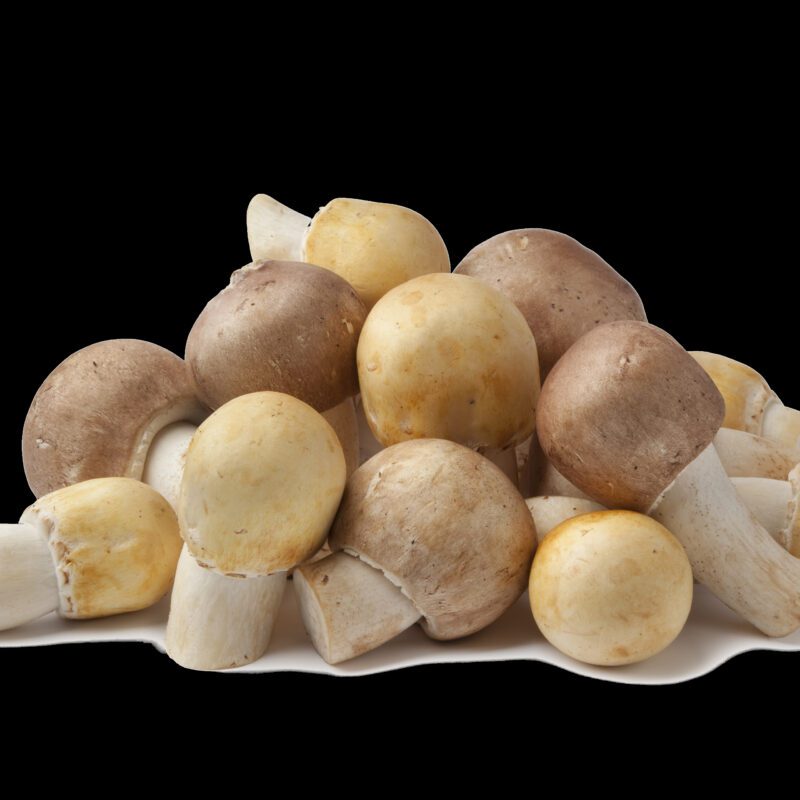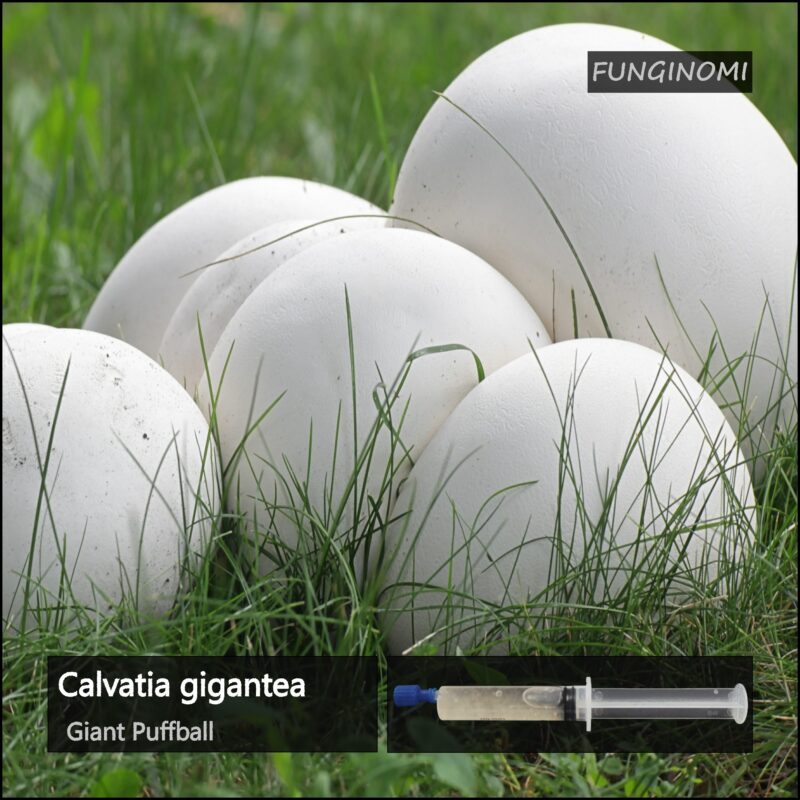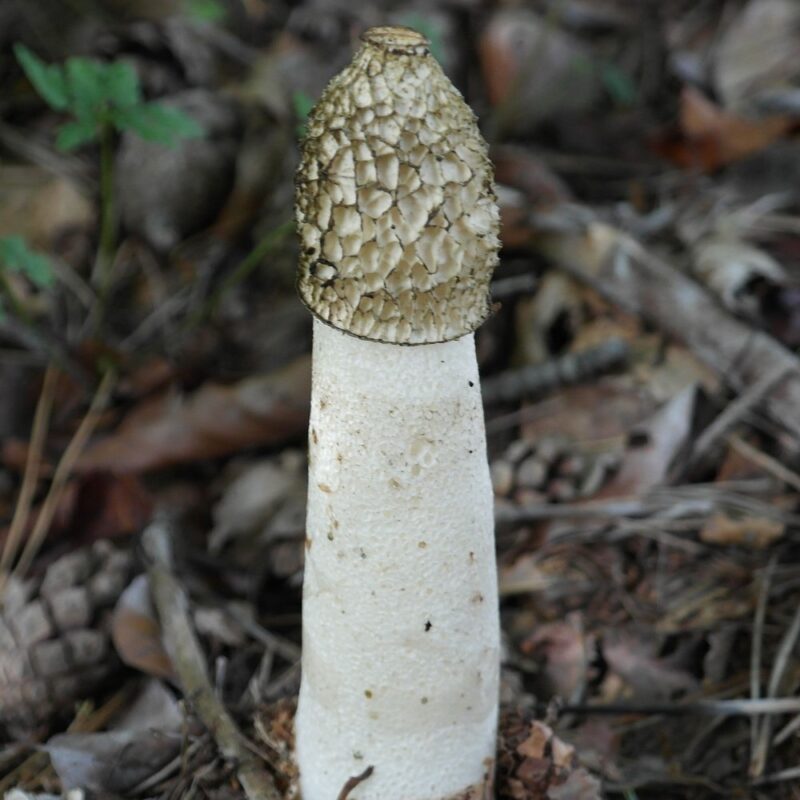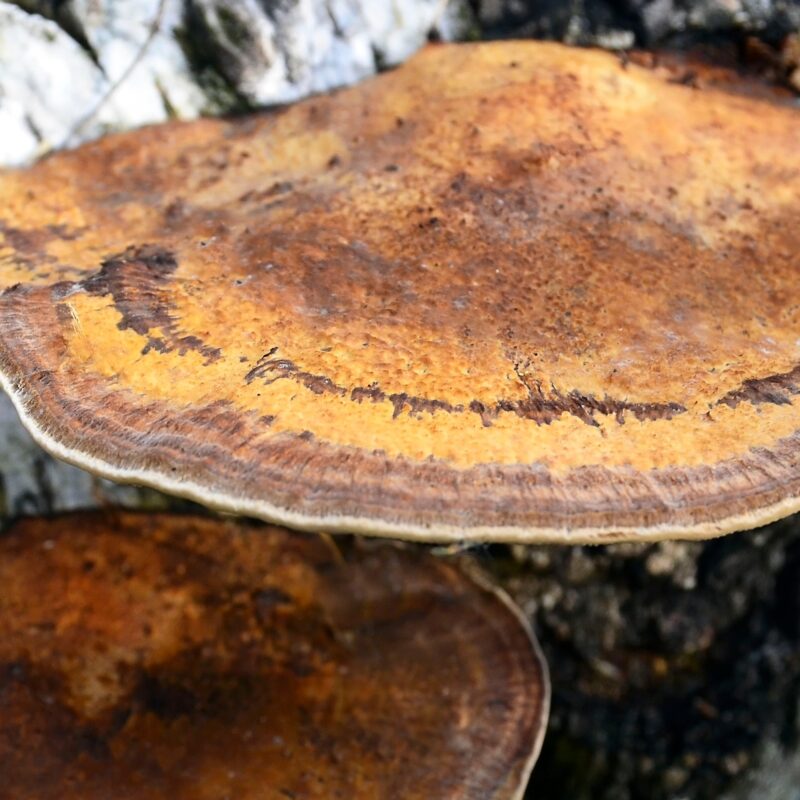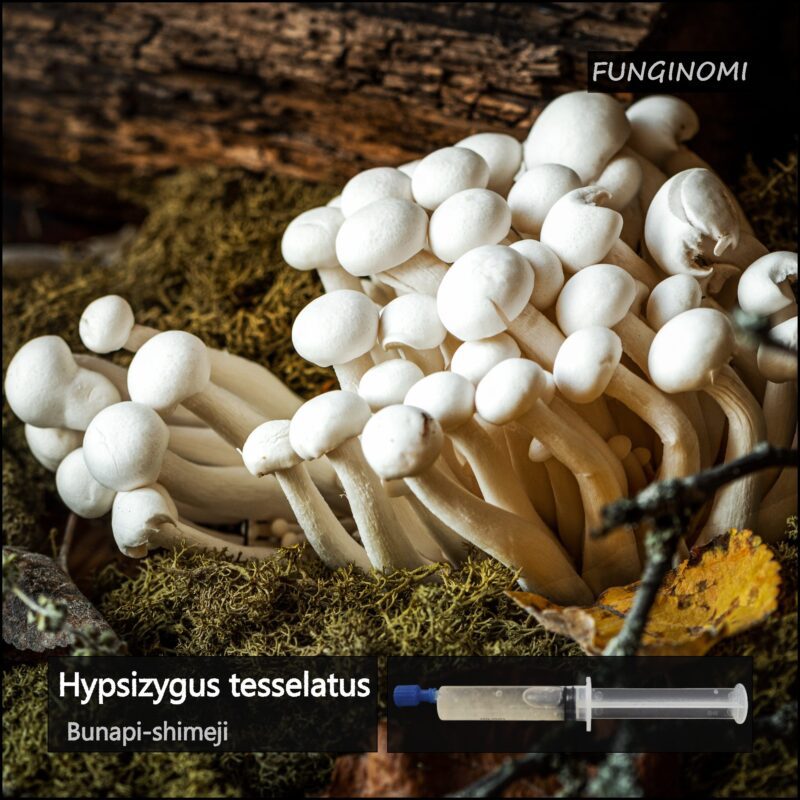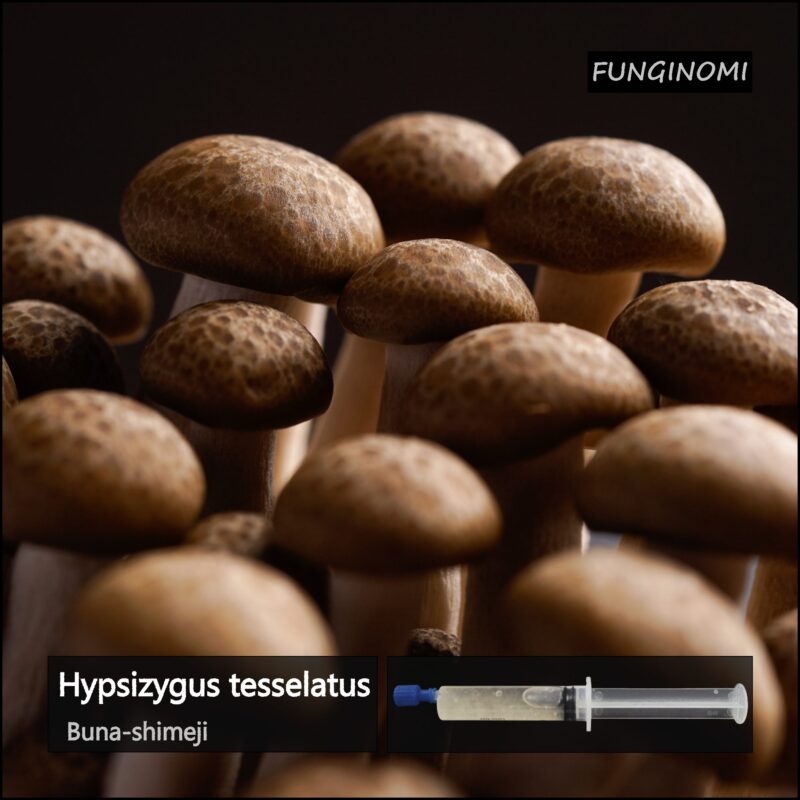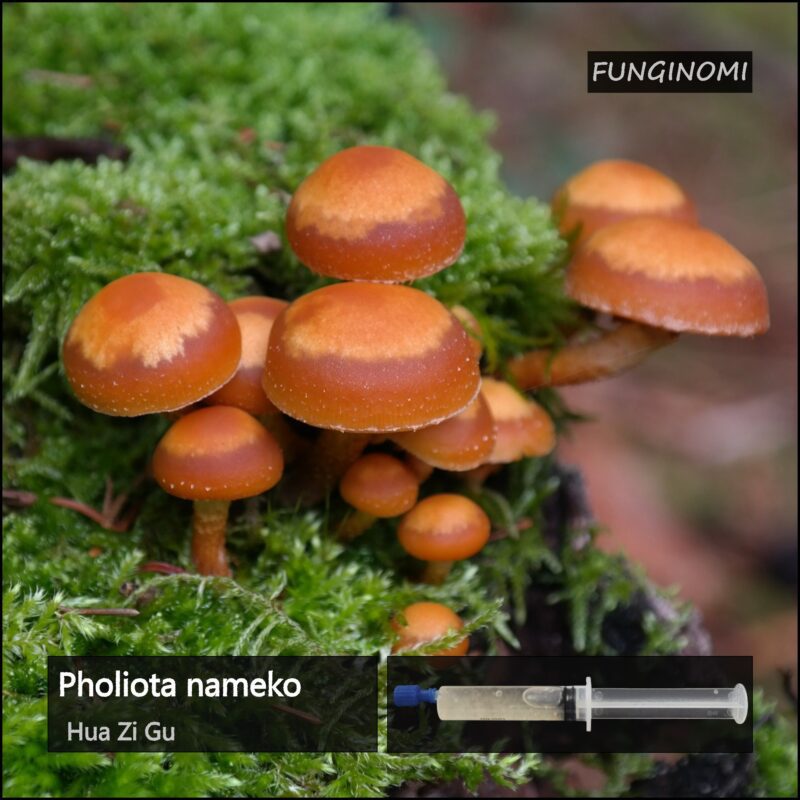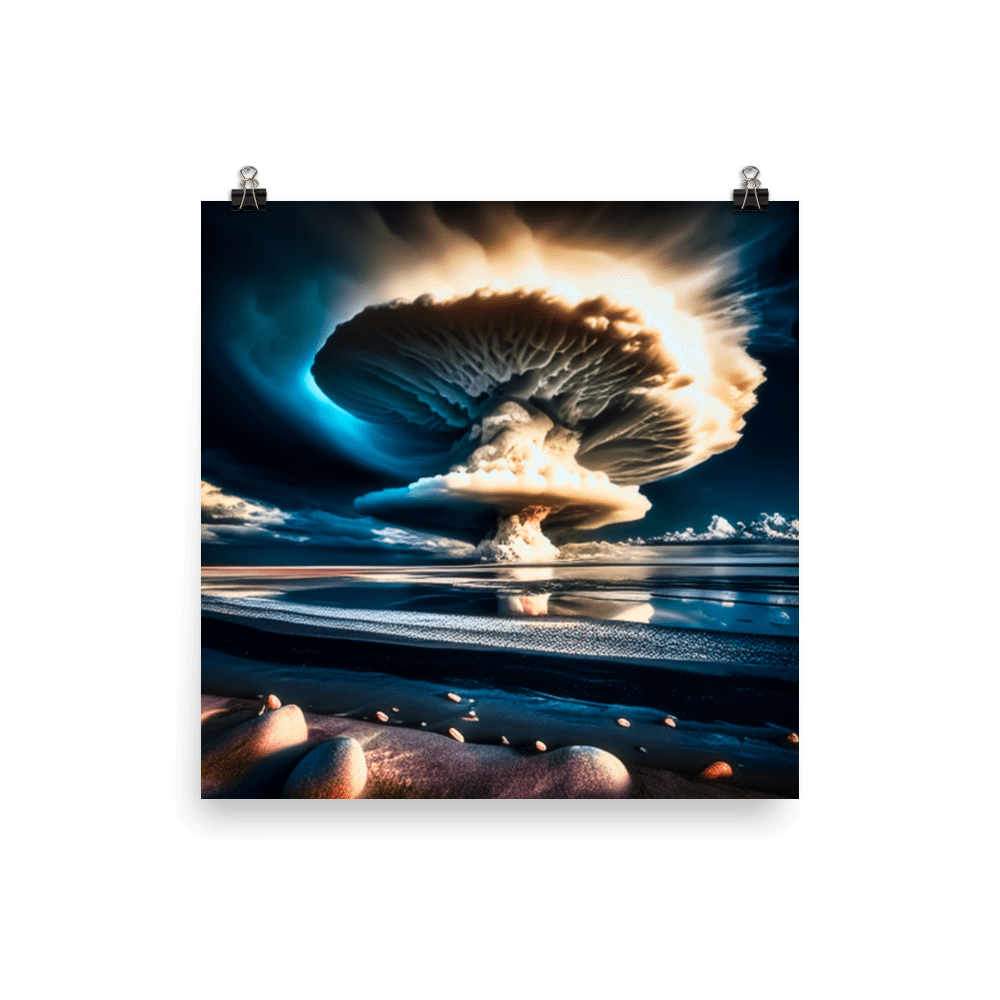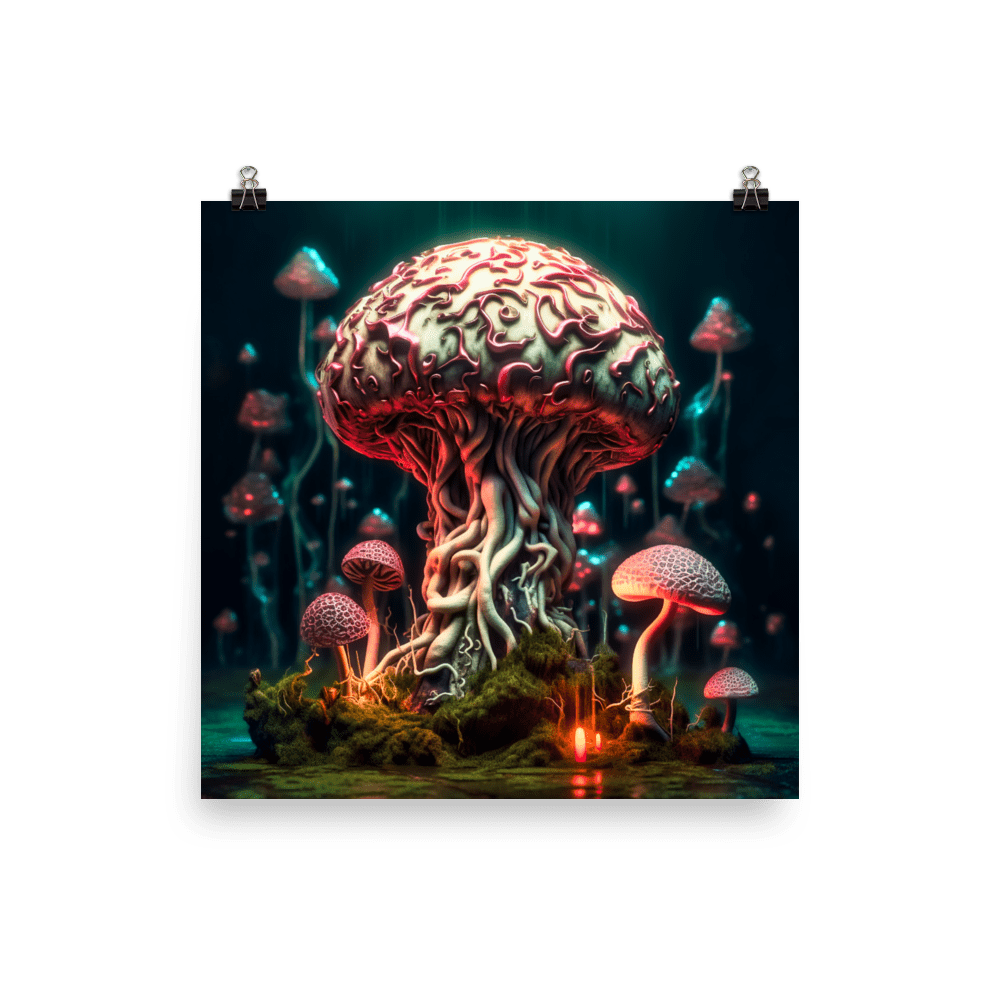A Comprehensive Guide Mushroom Growing Environments: Tips and Precautions
Introduction to Mushroom Grow environment

Brief overview of mushroom cultivation and its growing popularity
- Mushrooms are gaining popularity as a fascinating and rewarding hobby for enthusiasts and a profitable venture for commercial growers.
- This comprehensive guide will provide valuable insights into creating optimal mushroom growing environments, ensuring successful cultivation.
Importance of creating the right environment for successful mushroom growth
Creating the right environment is essential for ensuring successful mushroom growth. By providing optimal conditions, you can maximize the yield and quality of your mushrooms. Here are some key reasons why creating the right environment is crucial.
By understanding and addressing these key factors in creating the right environment, you provide your mushrooms with the best possible conditions for growth and development. This, in turn, increases the likelihood of successful mushroom cultivation, maximizing your yield and ensuring high-quality mushrooms for consumption or other purposes.
Remember, each mushroom species may have specific environmental preferences, so it’s important to research and tailor your growing conditions accordingly. Regular monitoring and adjustments throughout the growing process will help you maintain the optimal environment for your mushrooms and achieve the best possible results.
Understanding Mushroom Growth Requirements
Overview of the basic needs of mushrooms: light, temperature, humidity, and air circulation
To successfully cultivate mushrooms, it’s important to understand and provide the basic needs that support their growth and development. Here’s an overview of the four fundamental requirements for mushrooms: light, temperature, humidity, and air circulation.
1. Light:
- Mushrooms generally thrive in low light or darkness, as they are not photosynthetic organisms. They obtain their nutrients from organic matter rather than sunlight.
- However, some mushrooms benefit from light exposure during specific stages of growth. For example, certain species require light to trigger the formation and development of fruiting bodies (mushroom caps).
- It’s crucial to know the specific light preferences of the mushrooms you are cultivating and provide the appropriate lighting conditions accordingly.
2. Temperature:
- Temperature plays a critical role in mushroom cultivation, as different species have specific temperature requirements for optimal growth.
- Generally, mushrooms prefer temperatures between 18-24°C (64-75°F) for successful colonization and fruiting. However, the temperature requirements can vary depending on the mushroom species.
- Maintaining a consistent and appropriate temperature is crucial throughout the various stages of mushroom growth to ensure healthy mycelium colonization and robust fruiting.
3. Humidity:
- Mushrooms require a specific level of humidity to support their growth and development. Proper moisture content in the growing medium is essential for the formation of mycelium and the initiation of fruiting.
- Optimal humidity levels can vary depending on the specific mushroom species, but a general range of 85-95% relative humidity is often suitable for many varieties.
- It’s important to monitor and adjust humidity levels regularly to prevent the growing medium from drying out or becoming excessively wet, which can lead to poor mushroom growth or fungal contamination.
4. Air Circulation:
- Adequate air circulation and ventilation are vital for maintaining a healthy mushroom growing environment.
- Proper airflow helps ensure a fresh and oxygen-rich environment, which is essential for the respiration and metabolism of mushrooms.
- Good air exchange prevents the buildup of carbon dioxide, removes metabolic byproducts, and minimizes the risk of contamination by discouraging the growth of unwanted microorganisms.
- Be cautious not to create excessive air movement, which can dry out the growing medium or cause fluctuations in temperature and humidity. Strive for a gentle and consistent airflow.
By understanding and fulfilling these basic needs of mushrooms—light, temperature, humidity, and air circulation—you create a favorable environment that promotes healthy mushroom growth and maximizes your chances of a successful harvest. Remember to consider the specific requirements of the mushroom species you are cultivating and make any necessary adjustments accordingly. Regular monitoring and maintenance of these factors throughout the cultivation process will contribute to the overall success of your mushroom growing endeavors.
Detailed explanation of each requirement and its significance
To ensure successful mushroom cultivation, it’s essential to understand the significance of each requirement—light, temperature, humidity, and air circulation—and how they impact the growth and development of mushrooms.
1. Light: Mushrooms, unlike plants, do not rely on sunlight for energy through photosynthesis. They derive their nutrients from organic matter. While most mushrooms prefer low light or darkness, light exposure at specific stages can be crucial. Here’s why light is significant:
- Fruiting Body Formation: Some mushrooms require light to initiate and develop their fruiting bodies (mushroom caps). Light acts as a trigger, signaling the mushroom to transition from vegetative growth (mycelium) to reproductive growth (fruiting). Providing the appropriate lighting conditions during this stage is essential for successful fruiting.
2. Temperature: Temperature plays a vital role in mushroom cultivation, as it directly affects the growth rate, development, and overall health of mushrooms. Here’s why temperature is significant:
-
Mycelium Colonization: The mycelium, the vegetative part of mushrooms, requires specific temperatures for colonization. Maintaining the optimal temperature range allows the mycelium to grow and spread through the growing medium, establishing a strong network for nutrient absorption.
-
Fruiting Induction: Proper temperature conditions are crucial for inducing fruiting. By providing the correct temperature range, you stimulate the mycelium to transition into the fruiting stage, leading to the formation of mushrooms.
-
Enzymatic Activity: Temperature influences enzymatic activity within the mushrooms, affecting their metabolic processes. Optimal temperatures promote efficient enzymatic reactions and metabolic pathways, resulting in healthy growth and robust fruiting.
3. Humidity: Humidity refers to the moisture content in the growing environment and is a critical factor in mushroom cultivation. Here’s why humidity is significant:
-
Mycelium Growth: Adequate humidity is essential for the mycelium’s growth and colonization process. The presence of moisture enables the mycelium to expand and penetrate the growing medium, absorbing nutrients efficiently.
-
Fruiting Body Formation: Maintaining optimal humidity levels is crucial for the initiation and development of fruiting bodies. Appropriate humidity promotes the formation of primordia (early-stage mushrooms) and their subsequent growth into mature mushrooms.
-
Preventing Contamination: Maintaining the right humidity helps create an environment less prone to contamination by competing fungi or bacteria. It prevents the drying out of the growing medium, which can lead to colonization by unwanted organisms, and reduces the risk of fungal contamination during the fruiting stage.
4. Air Circulation: Proper air circulation and ventilation are vital for maintaining a healthy mushroom growing environment. Here’s why air circulation is significant:
-
Oxygen Supply: Mushrooms require oxygen for respiration and metabolic processes. Good air circulation ensures an adequate supply of oxygen to the growing environment, supporting the mushrooms’ vital functions.
-
Carbon Dioxide Removal: Mushrooms produce carbon dioxide as a byproduct of respiration. Proper air circulation helps remove excess carbon dioxide and prevent its accumulation. High levels of carbon dioxide can inhibit growth and adversely affect mushroom development.
-
Contamination Prevention: Effective air circulation minimizes the risk of contamination by discouraging the growth of unwanted microorganisms. It helps prevent the buildup of stale or stagnant air that can create a favorable environment for competing fungi, molds, or bacteria.
-
Moisture Regulation: Air circulation aids in moisture regulation by preventing excessive humidity buildup. It helps dissipate excess moisture, reducing the risk of fungal contamination or overly wet conditions that can hinder mushroom growth.
Understanding the significance of these requirements and their effects on mushroom growth allows you to create and maintain optimal conditions for successful cultivation. By providing the right amount of light, controlling temperature, managing humidity levels, and ensuring proper air circulation, you can create a favorable environment that supports healthy mycelium growth, robust fruiting, and minimizes the risk of contamination. Regular monitoring and adjustments to these factors throughout the cultivation process will contribute to the overall success of your mushroom growing endeavors.
Setting Up a Mushroom Growing Space
Selecting an appropriate location for your mushroom growing operation
Setting up a Mushroom Growing Space: Selecting an Appropriate Location for Your Mushroom Growing Operation
Choosing the right location for your mushroom growing operation is a crucial first step in creating a successful and productive mushroom growing space. Here are some factors to consider when selecting an appropriate location:
1. Space Availability:
- Ensure you have adequate space to accommodate your mushroom growing setup. Consider the scale of your operation and the number of mushrooms you intend to cultivate.
- Evaluate whether you will be growing mushrooms indoors or outdoors, as this will impact the space requirements and environmental control options.
2. Temperature Control:
- Mushrooms have specific temperature requirements for optimal growth. Look for a location where you can easily control and maintain the desired temperature range.
- Consider factors such as insulation, proximity to heat sources or cooling systems, and the ability to regulate temperature fluctuations.
3. Humidity Management:
- Mushrooms thrive in environments with specific humidity levels. Choose a location where you can effectively manage and control humidity.
- Avoid areas with excessive moisture or humidity, as this can increase the risk of fungal contamination. Similarly, areas prone to dryness may require additional measures to maintain appropriate humidity levels.
4. Light Conditions:
- Determine whether your chosen mushroom species require light or thrive in darkness. This will influence the location selection.
- For species that require light exposure, consider spaces that offer natural light or areas where you can provide artificial lighting during specific stages of growth.
5. Air Circulation:
- Proper air circulation is vital for maintaining a fresh and oxygen-rich environment for mushrooms. Look for a location that allows for adequate airflow.
- Consider ventilation options, such as windows, vents, or the ability to install fans, to ensure proper air exchange and minimize the risk of stagnant air.
6. Accessibility and Convenience:
- Choose a location that is easily accessible and convenient for daily management and maintenance tasks.
- Consider factors such as proximity to a water source, electrical outlets, storage space for equipment and supplies, and ease of movement within the growing space.
7. Contamination Prevention:
- Select a location that minimizes the risk of contamination from outside sources, such as pests, pollutants, or other potentially harmful elements.
- Avoid areas with high foot traffic or close proximity to sources of potential contamination, such as industrial areas or heavily polluted environments.
8. Infrastructure and Utilities:
- Evaluate the availability of necessary infrastructure and utilities. This includes electricity for lighting and equipment, access to water, and any specific requirements for your chosen cultivation method (e.g., shelves, racks, growing containers).
By carefully considering these factors and selecting an appropriate location for your mushroom growing operation, you can create an environment that meets the specific needs of your mushrooms, supports optimal growth conditions, and minimizes the risk of contamination. Remember to regularly monitor and adjust the growing environment to ensure the best possible results.
Factors to consider: light exposure, temperature control, and accessibility
When setting up a mushroom growing space, several key factors play a significant role in ensuring successful cultivation. Among these factors, light exposure, temperature control, and accessibility are crucial considerations. Let’s explore these factors in more detail:
1. Light Exposure:
- Consider the light requirements of the specific mushroom species you plan to cultivate. Determine whether they require light exposure or prefer darkness during certain stages of growth.
- If your mushrooms need light, choose a location that provides access to natural light or offers the ability to install artificial lighting systems. Ensure that the space allows for proper light intensity and duration based on the needs of your mushrooms.
- For mushrooms that thrive in darkness, select a location where you can effectively block out any sources of light that may interfere with their growth.
2. Temperature Control:
- Mushrooms have specific temperature preferences for optimal growth and development. It’s important to select a location where you can easily regulate and maintain the desired temperature range.
- Consider factors such as insulation, heating, and cooling options available in the chosen space. Insulation helps maintain a stable temperature, while heating and cooling systems enable you to adjust temperatures as needed.
- Avoid locations that are prone to extreme temperature fluctuations or areas where maintaining the desired temperature range would be challenging.
3. Accessibility:
- Choose a location that provides easy accessibility and convenience for daily management and maintenance of your mushroom growing space.
- Consider the proximity of the location to water sources for watering and humidity control. Easy access to electrical outlets is important for powering lighting systems, fans, or other equipment.
- Ensure sufficient space and clear pathways for movement within the growing area. This facilitates monitoring, harvesting, and tending to your mushrooms without unnecessary obstacles or disturbances.
By carefully considering light exposure, temperature control, and accessibility factors, you can create an optimal environment for your mushroom growing operation. This allows you to provide the necessary conditions for successful cultivation while ensuring convenience and efficiency in managing your mushroom crops. Remember to tailor these considerations to the specific requirements of your chosen mushroom species for the best results.
Constructing or modifying a growing area to meet the environmental needs of mushrooms
Creating an ideal growing area that meets the environmental needs of mushrooms is essential for successful cultivation. Whether you are constructing a new space or modifying an existing one, here are some key steps to consider:
1. Assess the Space:
- Evaluate the available space and determine its suitability for mushroom cultivation. Consider factors such as size, accessibility, and structural integrity.
- Take measurements to ensure you have enough room for the desired number of mushroom-growing containers or beds.
2. Control Light Exposure:
- If your mushrooms require light exposure, consider incorporating windows or skylights to allow natural light to enter the growing area.
- If natural light is insufficient or not feasible, install artificial lighting systems. LED grow lights are commonly used for their energy efficiency and adjustable spectrum options.
3. Insulation and Temperature Regulation:
- Ensure the growing area has proper insulation to maintain a stable temperature. Insulation helps prevent heat loss during cooler months and heat gain during warmer months.
- Install a heating system for colder periods and a cooling system for hotter periods, if necessary. Use thermostats or temperature controllers to maintain the desired temperature range.
4. Humidity Management:
- Install a humidifier or a misting system to regulate humidity levels within the growing area. This helps provide the necessary moisture for mushroom growth and development.
- Use a hygrometer to monitor and maintain the optimal humidity range for the specific mushroom species you are cultivating.
5. Ventilation and Air Circulation:
- Ensure proper airflow by installing fans or ventilation systems. This helps prevent the buildup of stale air, carbon dioxide, and excessive humidity.
- Place fans strategically to create gentle airflow without causing direct drafts that could dry out the growing medium.
6. Water Source and Drainage:
- Ensure a reliable water source is easily accessible within the growing area. This is necessary for watering, misting, and maintaining humidity levels.
- Incorporate appropriate drainage systems to prevent waterlogging and ensure excess water can be effectively removed.
7. Sterilization and Sanitation:
- Prioritize cleanliness and sanitation to prevent contamination. Use materials that are easy to clean and sanitize, such as smooth surfaces and non-porous materials.
- Implement a sterilization routine for equipment, containers, and the growing area itself to minimize the risk of fungal or bacterial contamination.
8. Organization and Efficiency:
- Plan the layout of your growing area to maximize space utilization and ensure efficient workflow. Consider shelving, racks, or tables to optimize vertical growing and easy access to mushroom-growing containers.
- Label and organize equipment, supplies, and mushroom varieties to maintain order and streamline your cultivation process.
By following these steps, you can construct or modify a growing area that meets the environmental needs of mushrooms. Customizing the space to control light exposure, temperature, humidity, and air circulation allows you to create an optimal environment for successful mushroom cultivation. Regular monitoring and adjustments will ensure that the growing area continues to meet the specific requirements of your mushrooms throughout their growth cycle.
Design considerations: insulation, ventilation, and lighting arrangements
When constructing or modifying a growing area for mushrooms, several design considerations play a crucial role in meeting the environmental needs of the mushrooms. Paying attention to insulation, ventilation, and lighting arrangements is key to creating an optimal growing environment. Here’s a closer look at these important design considerations:
1. Insulation:
- Insulation is essential for maintaining a stable temperature within the growing area. Choose insulating materials such as foam boards or reflective barriers to minimize heat transfer.
- Insulate the walls, ceiling, and floor of the growing area to reduce heat loss during cooler periods and prevent heat gain during warmer periods.
- Proper insulation helps create a thermal barrier, ensuring that the temperature within the growing area remains within the desired range for the mushrooms’ growth and development.
2. Ventilation:
- Ventilation is crucial for ensuring proper air circulation and maintaining fresh oxygen supply within the growing area. Install fans or a ventilation system to facilitate airflow.
- Controlled ventilation helps remove excess humidity and prevent the buildup of stale air or carbon dioxide. It also aids in preventing the growth of unwanted microorganisms.
- Ensure that the ventilation system allows for adjustable airflow to avoid direct drafts that may disrupt the mushrooms or cause excessive drying.
3. Lighting Arrangements:
- Proper lighting arrangements are necessary to meet the light requirements of your mushrooms. Determine whether your mushrooms need natural light or require artificial lighting.
- For natural light, consider window placement or the use of skylights to optimize light exposure. Ensure that the growing area receives adequate sunlight during the required periods.
- If artificial lighting is necessary, install LED grow lights with adjustable spectrum options to provide the optimal light conditions for mushroom growth and development.
By giving careful attention to insulation, ventilation, and lighting arrangements in the design of your growing area, you can create an environment that promotes optimal mushroom cultivation. The insulation helps maintain a stable temperature, while proper ventilation ensures fresh air exchange and prevents the accumulation of undesirable conditions. Meanwhile, thoughtful lighting arrangements enable you to provide the necessary light exposure for the mushrooms’ growth stages. Remember to consider the specific requirements of your mushroom species and regularly monitor and adjust these design elements as needed to create the best possible growing environment.
Controlling Temperature for Optimal Mushroom Growth
Understanding the temperature ranges preferred by different mushroom species
Temperature is a critical factor in the successful cultivation of mushrooms, including various species and even different varieties of magic mushrooms. Each type of mushroom has specific temperature preferences for optimal growth and development. Understanding these temperature ranges is essential for creating the ideal environment. Let’s explore the temperature preferences of different mushroom species and varieties, including magic mushrooms:
1. White Button Mushrooms (Agaricus bisporus):
- White Button Mushrooms prefer a temperature range of 55-65°F (13-18°C) during their fruiting stage. However, they require slightly cooler temperatures, around 60-65°F (15-18°C), during the vegetative growth phase.
- Higher temperatures can result in elongated stems, while lower temperatures can delay fruiting or inhibit growth.
2. Shiitake Mushrooms (Lentinula edodes):
- Shiitake Mushrooms thrive in a temperature range of 50-75°F (10-24°C). However, the optimal temperature for fruiting is typically between 55-65°F (13-18°C).
- Lower temperatures can prolong the fruiting process, while higher temperatures can lead to smaller and less desirable mushroom caps.
3. Oyster Mushrooms (Pleurotus spp.):
- Oyster Mushrooms generally prefer a temperature range of 65-75°F (18-24°C). This range allows for optimal mycelium growth and fruiting.
- Higher temperatures can accelerate growth but may result in reduced yields, while lower temperatures can slow down growth or inhibit fruiting.
4. Lion’s Mane Mushrooms (Hericium erinaceus):
- Lion’s Mane Mushrooms prefer a temperature range of 65-75°F (18-24°C) for successful cultivation. They require a relatively stable and moderate temperature environment.
- Extreme temperature fluctuations can negatively impact the growth and quality of Lion’s Mane Mushrooms.
5. Reishi Mushrooms (Ganoderma lucidum):
- Reishi Mushrooms prefer a temperature range of 70-80°F (21-27°C). They require a warm and stable environment for optimal growth and development.
- Higher temperatures can accelerate growth but may affect the quality of the mushrooms.
In addition to these species, different varieties of magic mushrooms (Psilocybe spp.) also have specific temperature preferences. While exact temperature ranges can vary between varieties, they generally thrive in a temperature range of 70-80°F (21-27°C) during the colonization and fruiting stages. It’s important to research the specific temperature requirements of the magic mushroom variety you intend to cultivate for the best results.
By understanding the temperature ranges preferred by different mushroom species and magic mushroom varieties, you can create a suitable environment that promotes healthy growth and maximizes your yield. Monitoring and maintaining the temperature within the optimal range for your chosen mushrooms is crucial for successful cultivation.
Techniques for maintaining the desired temperature levels in the growing environment
Maintaining the desired temperature levels is crucial for successful mushroom cultivation. To ensure optimal growth and development, it’s important to implement techniques that help regulate and control the temperature within the growing environment. Here are some effective techniques to achieve this:
1. Insulation:
- Insulate the walls, ceiling, and floor of the growing area using materials such as foam boards or reflective barriers. This helps minimize heat transfer and provides thermal insulation.
- Insulation prevents heat loss during cooler periods and helps prevent heat gain during warmer periods, maintaining a stable temperature for your mushrooms.
2. Heating Systems:
- Install heating systems such as electric heaters or radiant heating to provide warmth during colder periods. Use thermostats or temperature controllers to maintain the desired temperature range.
- Heating systems ensure that the growing environment remains within the optimal temperature range for your mushrooms’ growth and development.
3. Cooling Systems:
- Implement cooling systems like air conditioning units, evaporative coolers, or exhaust fans to regulate the temperature during hotter periods. These systems help remove excess heat and maintain a cooler environment.
- Proper ventilation and airflow are essential in cooling the growing area and preventing temperature spikes that could be detrimental to mushroom growth.
4. Temperature Monitoring:
- Use digital thermometers or temperature probes to monitor the temperature within the growing area accurately. Place them at different locations to ensure an even temperature distribution.
- Regularly check and record the temperature readings to identify any fluctuations or deviations from the desired range. This allows for prompt adjustments to maintain optimal conditions.
5. Thermal Blankets or Curtains:
- Consider using thermal blankets or curtains to cover the growing area during colder periods. These can help retain heat and create a more insulated environment.
- Thermal blankets or curtains provide an additional layer of protection against temperature fluctuations, especially in unheated spaces or during winter months.
6. Air Circulation:
- Ensure proper air circulation within the growing area by using fans or ventilation systems. This helps distribute heat evenly and prevents stagnant air pockets.
- Gentle airflow also helps regulate the temperature and prevents the formation of microclimates within the growing space.
7. Shading and Light Control:
- If excessive sunlight or heat is an issue, use shade cloths or light filters to control the amount of light and heat entering the growing area.
- Shading can help reduce the temperature and prevent overheating, especially in environments with intense sunlight or during summer months.
By implementing these techniques, you can effectively maintain the desired temperature levels in your mushroom growing environment. Remember to regularly monitor and adjust the temperature as needed, especially during seasonal changes. A stable and controlled temperature will provide the optimal conditions for your mushrooms’ growth and ensure a successful cultivation process.
Managing Humidity Levels in the Mushroom Growing Space
Importance of humidity for mushroom growth and development
Humidity plays a vital role in the successful growth and development of mushrooms. Maintaining the right level of humidity in the growing environment is essential for optimal mushroom cultivation. Here’s a closer look at the importance of humidity and its impact on mushroom growth:
1. Hydration and Moisture Absorption:
- Mushrooms are primarily composed of water, and humidity provides the necessary moisture for their growth. Adequate humidity levels ensure that mushrooms can absorb water through their mycelium and maintain their cellular hydration.
- Humidity prevents excessive drying of the mushroom’s fruiting body and helps maintain its turgidity and structural integrity.
2. Mycelium Growth and Nutrient Absorption:
- Mycelium, the vegetative part of the mushroom, requires a moist environment to grow and spread effectively. The presence of optimal humidity supports the expansion of mycelial networks, enabling efficient nutrient absorption from the growing substrate.
- Humidity ensures that mycelium remains healthy, active, and capable of sustaining the formation of fruiting bodies.
3. Primordial Formation and Fruiting Body Development:
- Humidity plays a critical role in the formation of primordia (baby mushrooms) and subsequent fruiting body development. Primordia initiation is triggered by specific environmental conditions, including appropriate humidity levels.
- Insufficient humidity can hinder the primordia formation, while adequate humidity promotes the development of healthy and robust fruiting bodies.
4. Spore Release and Dissemination:
- Humidity also influences the release and dissemination of mushroom spores, the reproductive cells of mushrooms. Higher humidity levels create a suitable environment for spore maturation and release, enhancing the reproductive success of the mushroom population.
5. Prevention of Drying and Dehydration:
- Inadequate humidity can lead to drying and dehydration of mushrooms, affecting their growth, quality, and overall yield. Insufficient moisture in the growing environment can cause stunted growth, smaller fruiting bodies, and potential loss of vitality.
6. Prevention of Contamination and Mold Growth:
- Maintaining optimal humidity helps prevent the proliferation of undesirable microorganisms and molds. Proper humidity levels create an environment that is less conducive to contamination, ensuring a healthier and more productive mushroom crop.
By controlling and maintaining proper humidity levels in the growing environment, you provide the optimal conditions for mushroom growth and development. This includes ensuring sufficient moisture for mycelium growth, promoting primordia formation, supporting fruiting body development, facilitating spore release, and preventing drying and contamination. Regular monitoring and adjustments to humidity levels, along with adequate ventilation, are crucial for creating an environment that maximizes the potential for successful mushroom cultivation.
Methods for increasing or decreasing humidity based on mushroom species
Maintaining the appropriate humidity levels is crucial for successful mushroom cultivation. Different mushroom species have varying humidity requirements. Depending on the specific needs of the mushrooms you are growing, you may need to increase or decrease humidity levels in the growing environment. Here are some methods for adjusting humidity based on mushroom species:
1. Increasing Humidity:
A. Misting and Spraying:
- Misting or spraying the growing area with water using a fine misting nozzle or spray bottle can help increase humidity. Direct the mist towards the walls and floor rather than directly onto the mushrooms to prevent water damage or excess moisture on the mushroom caps.
B. Humidifiers:
- Utilize humidifiers to introduce moisture into the growing environment. Choose a humidifier that suits the size of your growing area and adjust it to maintain the desired humidity level.
- Consider using ultrasonic humidifiers or cool mist humidifiers as they provide a fine mist that easily disperses into the air.
C. Wet Trays or Trays with Water:
- Place wet trays or trays filled with water in the growing area. The evaporation of water from the trays will increase humidity levels.
- Ensure that the trays are not in direct contact with the mushroom substrate to avoid excess moisture or waterlogging.
D. Humidity Tents or Chambers:
- Construct humidity tents or chambers using plastic sheeting or a transparent material. These enclosures help create a microclimate with higher humidity levels around the mushrooms.
- Place a humidifier or a tray of water inside the tent to maintain the desired humidity. Monitor the humidity level regularly to avoid excessive moisture buildup.
2. Decreasing Humidity:
A. Increase Ventilation:
- Enhance ventilation in the growing area by using fans or exhaust systems. Increased airflow helps reduce humidity levels by removing excess moisture and promoting air exchange.
- Place fans strategically to circulate air without directly blowing air onto the mushrooms, as excessive air movement can cause drying.
B. Dehumidifiers:
- Implement dehumidifiers to remove excess moisture from the growing environment. Dehumidifiers work by condensing moisture from the air and collecting it in a reservoir.
- Choose a dehumidifier with a capacity suitable for the size of your growing area and set it to the desired humidity level.
C. Drying Agents or Desiccants:
- Use drying agents or desiccants such as silica gel or calcium chloride to absorb excess moisture. Place them in containers or sachets and position them strategically in the growing area.
- Monitor the humidity levels and replace or recharge the drying agents as needed.
D. Increase Air Exchange:
- Improve air exchange by opening doors or windows periodically to allow fresh air to enter the growing area and facilitate moisture reduction.
- However, ensure that the introduction of fresh air does not lead to extreme temperature fluctuations or introduce contaminants.
Remember that the optimal humidity levels vary depending on the mushroom species. Conduct thorough research on the specific humidity requirements of the mushrooms you are cultivating and monitor the humidity levels regularly using a hygrometer. Fine-tuning the humidity conditions will help create an environment that fosters healthy mushroom growth and development.
Appropriate methods for different mushroom varieties
Each mushroom variety has its unique flavor profile, and with the right techniques, you can enhance their natural taste. Here are some appropriate methods for enhancing the flavors of different mushroom varieties, including magic mushrooms:
1. White Button Mushrooms (Agaricus bisporus):
- Sautéing: Sauté white button mushrooms in butter or olive oil to bring out their mild, earthy flavor. Add garlic, thyme, or parsley for additional aroma and depth.
2. Shiitake Mushrooms (Lentinula edodes):
- Marinating: Marinate shiitake mushrooms in a mixture of soy sauce, sesame oil, and ginger before cooking to infuse them with umami richness.
- Roasting: Roasting shiitake mushrooms at a high temperature with a drizzle of olive oil, salt, and pepper intensifies their nutty and meaty flavors.
3. Oyster Mushrooms (Pleurotus spp.):
- Grilling: Grill oyster mushrooms with a brush of olive oil and a sprinkle of salt, pepper, and herbs. The grilling process adds a smoky flavor and brings out their delicate sweetness.
- Stir-Frying: Stir-fry oyster mushrooms on high heat with a touch of sesame oil and a splash of soy sauce for a quick and flavorful dish.
4. Lion’s Mane Mushrooms (Hericium erinaceus):
- Pan-Searing: Pan-sear lion’s mane mushrooms in a combination of butter and garlic until golden brown. The searing process enhances their delicate, seafood-like flavor.
- Incorporating Creamy Sauces: Lion’s mane mushrooms pair well with creamy sauces like a white wine cream sauce or a mushroom-based cream sauce, adding richness and depth to their taste.
5. Reishi Mushrooms (Ganoderma lucidum):
- Simmering in Broth: Simmer reishi mushrooms in a flavorful broth, such as vegetable broth or miso broth, to extract their earthy and woody flavors. Use the infused broth as a base for soups or stews.
6. Magic Mushrooms (Psilocybe spp.):
- Infusing in Tea: Magic mushrooms are commonly consumed in the form of tea. Steep them in hot water along with herbal tea, such as chamomile or peppermint, to mask their earthy taste and create an enjoyable beverage.
For all mushroom varieties, it’s essential to avoid overpowering their natural flavors. Experiment with complementary ingredients and cooking techniques to bring out the best in each mushroom variety, including magic mushrooms. Remember to follow safe and legal guidelines regarding the consumption of magic mushrooms, and always consult reputable sources for guidance.
Pro tips for enhancing flavors during preparation
To take your mushroom dishes to the next level and bring out their natural flavors, here are some pro tips for enhancing their taste during preparation:
1. Proper Mushroom Selection:
- Choose fresh and high-quality mushrooms to ensure optimal flavor. Look for mushrooms that are firm, with no signs of browning or decay. Different mushroom varieties offer unique flavors, so select the ones that best suit your dish.
2. Cleaning and Handling:
- Clean mushrooms gently using a soft brush or a damp paper towel to remove any dirt or debris. Avoid soaking them in water, as mushrooms are porous and can absorb excess moisture, affecting their texture and taste.
- Trim any tough stems or discolored parts, but keep in mind that some mushroom varieties, like shiitake or oyster mushrooms, have edible stems with great flavor.
3. Precooking Techniques:
- Sautéing: Sauté mushrooms in butter or olive oil over medium-high heat to bring out their natural flavors. Add minced garlic, chopped herbs, or a pinch of salt and pepper for extra taste.
- Roasting: Roast mushrooms in the oven at a high temperature with a drizzle of olive oil, salt, and herbs. This method intensifies their earthy and savory notes.
4. Flavor Combinations:
- Garlic and Herbs: Enhance the flavors of mushrooms by incorporating aromatic ingredients such as minced garlic, fresh thyme, rosemary, or parsley. These additions complement the earthiness of mushrooms and add depth to the overall taste.
- Acidic Ingredients: Add a touch of acidity to brighten the flavors of mushrooms. Squeeze fresh lemon juice or splash a bit of balsamic vinegar over cooked mushrooms to balance their richness and enhance their taste.
5. Pairing Ingredients:
- Umami Boosters: Combine mushrooms with umami-rich ingredients like soy sauce, miso paste, or Parmesan cheese to intensify their savory flavors.
- Creamy Additions: Creamy ingredients like cream, cheese, or coconut milk can complement the earthy taste of mushrooms and create a luscious texture.
6. Balancing Techniques:
- Seasoning: Taste and season mushrooms appropriately with salt and pepper throughout the cooking process to bring out their natural flavors. Remember to season in layers to build depth.
- Reducing Liquids: When cooking mushroom sauces or gravies, simmer them to reduce the liquid and intensify the flavors. This technique enhances the concentration of the mushroom essence.
Remember, experimentation is key when it comes to enhancing mushroom flavors. Explore different techniques, ingredients, and combinations to discover your preferred taste profiles. With these pro tips, you’ll be able to create delicious mushroom dishes that showcase their incredible flavors.
Providing Adequate Air Circulation for Healthy Mushrooms
Explaining the role of air exchange in a mushroom growing environment
Adequate air circulation and exchange play a crucial role in maintaining a healthy mushroom growing environment, including for magic mushrooms. Here’s an explanation of the significance of air exchange and circulation:
1. Removal of Stale Air:
- Fresh Oxygen Supply: Mushrooms, including magic mushrooms, require a continuous supply of fresh oxygen to support their growth and development. Proper air circulation helps remove stale air, ensuring a fresh oxygen supply to the growing mushrooms.
- Carbon Dioxide Removal: During respiration, mushrooms release carbon dioxide (CO2) as a byproduct. Accumulation of CO2 can hinder mushroom growth and may lead to issues like stunted development or increased susceptibility to diseases. Sufficient air exchange helps remove CO2 and maintain optimal CO2 levels for healthy mushroom growth.
2. Prevention of Moisture Build-Up:
- Control of Relative Humidity: Effective air circulation aids in controlling and balancing the relative humidity within the growing environment. It helps prevent excessive moisture build-up, which can lead to issues such as mold growth or waterlogged substrates. Maintaining proper humidity levels is essential for the overall health and productivity of mushrooms, including magic mushrooms.
- Prevention of Condensation: Good air circulation helps prevent condensation on the surfaces of mushrooms and growing materials. Excessive moisture on mushrooms can promote the growth of harmful organisms and compromise their quality.
3. Removal of Volatile Compounds:
- Off-Gassing Removal: Mushrooms, including magic mushrooms, release volatile compounds as part of their metabolic processes. These compounds, if accumulated in the growing environment, can negatively impact the mushrooms’ flavor, aroma, and overall quality. Sufficient air exchange helps remove these off-gassing compounds, promoting better-tasting mushrooms.
4. Prevention of Contamination:
- Reduction of Contaminants: Adequate air circulation helps reduce the chances of contamination by minimizing the presence of airborne contaminants, such as spores of competing fungi or bacteria. Contaminants can hinder mushroom growth, affect yields, and compromise the desired characteristics of magic mushrooms.
To ensure proper air circulation in a mushroom growing environment, consider the following measures:
- Ventilation Systems: Install fans, air vents, or air exchange systems to facilitate the movement of air within the growing area. This promotes consistent air circulation and exchange.
- Strategic Placement: Position fans or vents strategically to create a gentle airflow without directly blowing air onto the mushrooms, which may cause drying or damage.
- Proper Spacing: Provide adequate spacing between mushroom containers or trays to allow for sufficient air movement and minimize the risk of stagnant air pockets.
By prioritizing adequate air circulation and exchange, you create an environment that supports healthy mushroom growth, including for magic mushrooms. Remember to maintain a balance, avoiding excessive air movement that may lead to drying out the mushrooms or disrupting their growth. Regular monitoring of temperature, humidity, and air quality indicators can help ensure optimal conditions for successful mushroom cultivation.
Strategies for achieving proper air circulation and preventing stagnant air
To ensure proper air circulation and prevent stagnant air in your mushroom growing environment, including for magic mushrooms, consider implementing the following strategies:
1. Ventilation Systems:
- Install fans or ventilation systems to facilitate consistent air movement. Place them strategically to create a gentle airflow throughout the growing area. This helps prevent stagnant air pockets and promotes adequate air exchange.
2. Optimal Placement of Fans and Vents:
- Position fans or vents at strategic locations within the growing area to promote effective air circulation. Place them in a way that avoids directly blowing air onto the mushrooms, which could lead to drying or damage.
3. Adequate Spacing between Mushroom Containers:
- Provide sufficient spacing between mushroom containers or trays. This allows for proper air movement between the containers, minimizing the risk of stagnant air pockets.
4. Room Design Considerations:
- Avoid clutter within the growing area to allow for unrestricted air movement. Ensure there is ample space for air to flow freely around the mushrooms and growing materials.
- Arrange the layout of the room in a way that promotes even distribution of air throughout the space. Consider the placement of shelving units, equipment, and obstacles to facilitate optimal air circulation.
5. Monitoring and Adjusting:
- Regularly monitor the airflow, temperature, and humidity levels within the growing environment. Use hygrometers and thermometers to track these factors and ensure they remain within the appropriate ranges.
- Adjust the position and speed of fans or ventilation systems as needed to achieve the desired airflow without causing excessive drying or disturbances.
6. Maintain Cleanliness and Hygiene:
- Regularly clean and sanitize the growing area, including fans, vents, and air ducts. This helps prevent the accumulation of dust, spores, or contaminants that could affect air quality and mushroom health.
By implementing these strategies, you can achieve proper air circulation and prevent stagnant air in your mushroom growing environment. Remember to strike a balance between gentle airflow and avoiding excessive drafts that may negatively impact the mushrooms. Regular observation and adjustments will help create an optimal environment for healthy mushroom growth, including magic mushrooms.
Optimizing Lighting Conditions for Mushroom Cultivation
Understanding the impact of light on mushroom growth and fruiting
Light plays a significant role in the cultivation of mushrooms, affecting their growth, development, and fruiting. Understanding the impact of light and optimizing lighting conditions is crucial for successful mushroom cultivation. Here’s an explanation of the significance of light in mushroom growth:
1. Triggering Mushroom Development:
- Photoperiod Sensitivity: Certain mushroom species, including shiitake and oyster mushrooms, exhibit photoperiod sensitivity. They require specific light conditions, such as a suitable duration of light and darkness, to initiate the fruiting process. Providing the right light exposure helps trigger the formation of fruiting bodies.
- Energy Source: Adequate light exposure ensures a sufficient energy supply for healthy mushroom growth.
3. Formation of Pigments:
- Pigment Production: Light influences the production of pigments in mushrooms, contributing to their visual characteristics and potentially impacting their nutritional composition. For example, exposure to light stimulates the production of the pigment ergosterol, which is a precursor to vitamin D in mushrooms.
4. Directional Growth and Orientation:
- Phototropism: Some mushroom species, such as button mushrooms and oyster mushrooms, exhibit phototropism, a growth response to light. Proper lighting conditions help guide the directional growth of mushroom mycelium and fruiting bodies, ensuring optimal form and structure.
5. Regulation of Biological Processes:
- Circadian Rhythm: Light acts as a key factor in regulating the circadian rhythm of mushrooms. Maintaining a consistent light-dark cycle helps synchronize biological processes within the mushroom mycelium, leading to better growth, development, and fruiting.
To optimize lighting conditions for mushroom cultivation, consider the following guidelines:
1. Light Intensity:
- Provide adequate light intensity for mushroom growth, which can vary depending on the species. Different mushrooms have different light preferences, ranging from low light to moderate or even indirect sunlight. Adjust the distance between the light source and mushrooms accordingly to achieve the desired intensity.
2. Light Spectrum:
- Choose a light source that emits a suitable spectrum of light for mushroom growth. Generally, cool-white or daylight spectrum fluorescent lights or LED lights are preferred. These lights provide a balanced spectrum that covers the necessary wavelengths for photosynthesis and mushroom development.
3. Photoperiod Management:
- Determine the optimal photoperiod required for the specific mushroom species you are cultivating. Some mushrooms may require a specific duration of light and darkness to initiate fruiting. Use timers or automated systems to ensure consistent and appropriate light exposure.
4. Light Exposure during Fruiting:
- When mushrooms enter the fruiting stage, manage light exposure to simulate natural lighting conditions. Provide a balance between light and darkness to support the formation and development of fruiting bodies. In some cases, indirect or diffused light may be preferred to prevent direct light exposure on the mushrooms.
5. Light Source Positioning:
- Position the light source above the mushrooms to mimic the natural sunlight direction. This helps promote upward growth and development of fruiting bodies.
By understanding the impact of light on mushroom growth and fruiting and implementing appropriate lighting conditions, you can optimize the cultivation process and enhance the overall quality and yield of your mushrooms. Experimentation and observation are key to finding the optimal lighting conditions for each mushroom species you cultivate.
Types of lighting options suitable for different stages of mushroom cultivation
Proper lighting is essential for successful mushroom cultivation, and different stages of mushroom growth may require varying lighting options. Here are some types of lighting options suitable for different stages of mushroom cultivation, with important words and keywords bolded:
1. Incubation Stage: During the incubation stage, when mushroom mycelium is colonizing the substrate, low-intensity ambient light is generally sufficient. Natural daylight from windows or indirect sunlight can be used. If additional lighting is needed, fluorescent lights or LED lights with a cool-white or daylight spectrum can provide the required illumination without generating excessive heat.
2. Fruiting Stage: Once the mushrooms enter the fruiting stage, proper lighting becomes crucial. Here are two common options:
-
Natural Daylight: If your growing space allows, exposing mushrooms to natural daylight can be beneficial. Place the mushrooms near a window with filtered or indirect sunlight. However, keep in mind that direct sunlight can be too intense and may overheat the growing environment.
-
Artificial Lighting: Artificial lighting options are often used to supplement or replace natural daylight during the fruiting stage. The following options can be effective:
-
Fluorescent Lights: T5 or T8 fluorescent lights with a cool-white or daylight spectrum are suitable for most mushroom species. Position the lights above the mushrooms to provide uniform illumination. Avoid using fluorescent lights with a warm-white spectrum, as they may not provide the necessary light wavelengths for optimal growth.
-
LED Lights: LED lights offer energy efficiency and customizable light spectra. Choose LED lights with a suitable spectrum for mushroom growth, such as a cool-white or daylight spectrum. Position the lights above the mushrooms to provide adequate coverage.
-
Full-Spectrum LED Grow Lights: Full-spectrum LED grow lights provide a wider range of light wavelengths, including those beneficial for mushroom growth. These lights can mimic natural sunlight more closely and are particularly useful for species that require specific light conditions, such as magic mushrooms.
-
When using artificial lighting, it’s important to maintain an appropriate light-dark cycle for fruiting mushrooms. A common recommendation is a 12-hour light and 12-hour darkness cycle, but the specific requirements may vary depending on the mushroom species.
Remember to monitor the temperature near the lights to prevent overheating and adjust the lighting intensity based on the specific needs of your mushrooms. Regular observation of mushroom growth and response to lighting will help you fine-tune the lighting conditions for optimal results.
By selecting the appropriate lighting options for each stage of mushroom cultivation, you can provide the necessary light spectrum and intensity to support healthy growth and maximize your mushroom yields.
Advanced Techniques and Technologies for Mushroom Cultivation
Introduction to advanced environmental control systems
As mushroom cultivation continues to evolve, advanced techniques and technologies have emerged to optimize the growing environment and enhance productivity. One such innovation is the use of advanced environmental control systems, which play a vital role in creating and maintaining optimal conditions for mushroom cultivation. Here’s an introduction to advanced environmental control systems, with important words and keywords bolded:
1. Automated Climate Control: Advanced environmental control systems utilize automated climate control to regulate temperature, humidity, and airflow within the growing environment. These systems feature sensors, controllers, and actuators that monitor and adjust the environmental parameters to ensure they remain within the desired ranges. By automating climate control, growers can achieve precise and consistent conditions without manual intervention.
2. Temperature and Humidity Regulation: Advanced systems incorporate sophisticated temperature and humidity regulation mechanisms. They utilize precision heating and cooling devices, such as thermostats, heaters, cooling units, and humidifiers, to maintain optimal temperature and humidity levels for mushroom growth. These systems can accurately control and adjust the environmental conditions based on the specific requirements of different mushroom species.
3. Airflow Management: Efficient airflow management is critical for maintaining fresh air exchange and preventing the buildup of stale or stagnant air. Advanced environmental control systems utilize ventilation systems, exhaust fans, and air circulation devices to ensure proper airflow within the growing area. This helps to remove excess heat, carbon dioxide, and volatile compounds while replenishing fresh oxygen.
4. CO2 Monitoring and Enrichment: To optimize mushroom growth, advanced systems often incorporate CO2 monitoring and enrichment capabilities. Carbon dioxide sensors are used to measure the levels of CO2 within the growing environment. Based on the readings, automated systems can introduce controlled amounts of CO2 to enhance mushroom growth and development.
5. Lighting Control: Advanced environmental control systems may also integrate lighting control features. This allows growers to program and regulate the intensity, duration, and spectrum of artificial lighting sources. By customizing the lighting conditions based on specific mushroom species’ requirements, growers can maximize photosynthesis, fruiting body formation, and overall crop quality.
6. Data Monitoring and Analysis: Many advanced systems include data monitoring and analysis functionalities. They collect and analyze environmental data, such as temperature, humidity, airflow, and CO2 levels, in real-time. This enables growers to track and optimize the growing conditions, identify patterns, and make data-driven decisions to enhance productivity and quality.
Implementing advanced environmental control systems in mushroom cultivation provides several benefits, including improved yield, consistency, and efficiency. These systems enable growers to create an optimized environment that closely mimics the natural habitat of mushrooms. By maintaining precise control over temperature, humidity, airflow, and lighting, growers can achieve accelerated growth, shorten cultivation cycles, and produce high-quality mushrooms consistently.
However, it’s important to note that advanced environmental control systems require an initial investment and technical expertise for setup and maintenance. Growers should carefully evaluate their specific needs, budget, and available resources before adopting these technologies.
Innovations in automated temperature, humidity, and air circulation management
Automation has revolutionized the way temperature, humidity, and air circulation are managed in mushroom cultivation. Advanced technologies and innovations have emerged to streamline and optimize these crucial environmental factors. Let’s explore some of the key innovations in automated temperature, humidity, and air circulation management, with important words and keywords bolded:
1. Smart Environmental Control Systems: Smart environmental control systems incorporate sensors, controllers, and automation software to monitor and adjust temperature, humidity, and air circulation in real-time. These systems utilize intelligent algorithms to analyze data and make precise adjustments, ensuring optimal growing conditions for mushrooms.
2. Climate Control Automation: Automation technologies have led to the development of sophisticated climate control automation systems. These systems integrate multiple components, such as thermostats, humidity sensors, and ventilation controllers, to maintain precise environmental parameters. They automatically regulate temperature, humidity, and air circulation based on predefined setpoints, minimizing manual intervention and maximizing efficiency.
3. Precision Heating and Cooling Systems: Innovative heating and cooling systems have been designed to provide precision temperature control in mushroom cultivation. These systems utilize advanced heating elements and cooling units that can deliver accurate and stable temperature ranges specific to different mushroom species. They are often integrated with automated controls for seamless temperature management.
4. Humidity Control Technologies: Automated humidity control technologies have emerged to ensure consistent and optimal moisture levels in mushroom growing environments. These technologies employ humidifiers and dehumidifiers that work in conjunction with humidity sensors and controllers. They maintain the desired humidity range by adding or extracting moisture as needed, preventing excessive or inadequate humidity levels.
5. Airflow Optimization Systems: Innovations in airflow optimization have resulted in advanced ventilation systems and air circulation devices. These systems ensure the proper exchange of air and prevent stagnant conditions. They utilize sensors and automated controls to regulate fan speeds, air direction, and air exchange rates, creating a healthy and fresh environment for mushroom growth.
6. Integration with IoT and Data Analytics: Automation technologies have integrated mushroom cultivation systems with the Internet of Things (IoT) and data analytics capabilities. This allows for remote monitoring and control of environmental parameters through mobile devices or web-based interfaces. Real-time data collection and analytics provide valuable insights into environmental trends, enabling growers to make data-driven decisions and optimize growing conditions.
By adopting these automated technologies and innovations, mushroom growers can achieve precise control over temperature, humidity, and air circulation, resulting in optimal growing conditions and improved crop yields. These advancements reduce manual labor, minimize human error, and enhance overall efficiency in mushroom cultivation.
It’s important for growers to assess their specific requirements, budget, and technical expertise before implementing automated systems. Working with reputable suppliers or consulting experts in the field can help ensure the selection and implementation of the most suitable technologies for their mushroom cultivation operation.
Best practices for long-term storage
Proper storage is essential to maintain the freshness and quality of mushrooms over an extended period. By following best practices for long-term storage, you can maximize the shelf life and preserve the flavor of your mushrooms. Here are some important tips and practices, with important words and keywords bolded:
1. Harvesting at the Right Time: Harvest mushrooms at their peak freshness and just before they fully mature. This ensures that they have the best flavor and texture, making them more suitable for long-term storage.
2. Cleaning and Preparation: Start by cleaning the mushrooms to remove any dirt, debris, or excess moisture. Gently brush off dirt or wipe them with a damp cloth. Avoid soaking mushrooms in water, as it can cause them to become soggy. Trim off any damaged or discolored parts before storage.
3. Packaging: Choose appropriate storage containers that allow for proper airflow while protecting the mushrooms. For whole mushrooms, use breathable containers such as paper bags or perforated plastic bags. Avoid using airtight containers, as they can trap moisture and lead to spoilage. Alternatively, you can use plastic containers lined with paper towels to absorb excess moisture.
4. Refrigeration: The ideal temperature for storing most mushrooms is between 32°F (0°C) and 39°F (4°C). Place the packaged mushrooms in the vegetable drawer or airtight section of the refrigerator. This helps maintain a cool and consistent environment, extending the shelf life of the mushrooms.
5. Proper Handling: Handle mushrooms with care to prevent bruising or damage. Avoid squeezing or compressing them, as this can lead to faster deterioration. Always wash your hands before handling mushrooms to prevent the transfer of bacteria or contaminants.
6. Check and Rotate: Regularly check the stored mushrooms for any signs of spoilage, such as mold, sliminess, or unpleasant odors. Remove any spoiled mushrooms immediately to prevent the spread of spoilage to others. If using multiple containers, rotate them regularly to ensure even storage conditions.
7. Freezing (Optional): Some mushroom varieties can be frozen for long-term storage. Before freezing, blanch the mushrooms briefly in boiling water and then transfer them to an ice bath to stop the cooking process. Drain the mushrooms thoroughly and place them in airtight freezer bags or containers. Label and date the packages, and store them in the freezer at 0°F (-18°C) or below.
8. Consumption Priority: It’s advisable to consume the stored mushrooms within a reasonable time frame, as their quality may gradually decline over time. The sooner you use them, the better the taste and texture will be.
By following these best practices, you can extend the shelf life of your mushrooms and ensure they remain fresh and flavorful during long-term storage. Remember to monitor the stored mushrooms regularly and discard any spoiled ones promptly to maintain the quality of the remaining batch.
Troubleshooting Common Environmental Issues
Identifying and addressing temperature, humidity, and air circulation problems
Maintaining optimal temperature, humidity, and air circulation is crucial for successful mushroom cultivation. However, environmental issues can arise that affect these factors, leading to problems in your growing environment. Here are some common issues and troubleshooting tips to identify and address temperature, humidity, and air circulation problems, with important words and keywords bolded:
1. Temperature Issues:
-
High Temperature: If the temperature in your growing area is too high, it can inhibit mushroom growth and development. To address this issue, consider the following steps:
- Increase ventilation by using fans or opening windows to improve air exchange.
- Use cooling devices such as air conditioners, evaporative coolers, or fans to lower the temperature.
- Place the growing containers in a cooler area of the room or adjust the temperature controls if using an environmental control system.
-
Low Temperature: Inadequate warmth can slow down or halt mushroom growth. To tackle low temperature issues:
- Provide insulation to the growing area by using materials like blankets, foam, or bubble wrap to retain heat.
- Utilize heating devices such as heaters, heat mats, or heat lamps to raise the temperature.
- Consider relocating the growing area to a warmer spot in your home or using a heating system if available.
2. Humidity Issues:
-
High Humidity: Excess humidity can lead to the growth of mold or bacterial contaminants. To manage high humidity levels:
- Increase ventilation by improving airflow through fans, vents, or open windows.
- Use dehumidifiers to remove excess moisture from the air.
- Space out the growing containers to allow for better air circulation and prevent condensation.
-
Low Humidity: Insufficient humidity can cause mushrooms to dry out and prevent proper growth. To address low humidity problems:
- Increase humidity levels by misting the growing area or placing trays of water nearby to allow for natural evaporation.
- Use humidifiers to add moisture to the air.
- Group the growing containers closer together to create a microclimate with higher humidity.
3. Air Circulation Issues:
-
Stagnant Air: Inadequate air circulation can result in the accumulation of carbon dioxide and stagnant conditions, inhibiting mushroom growth. To improve air circulation:
- Position fans strategically to ensure proper airflow throughout the growing area.
- Regularly open doors or windows to allow fresh air to enter the space.
- Use air circulation devices to create gentle airflow within the growing area.
-
Excessive Airflow: Excessive airflow can cause mushrooms to dry out quickly or lead to temperature fluctuations. To address excessive airflow problems:
- Adjust the positioning of fans to create a more gentle airflow.
- Use air diffusers or air baffles to distribute airflow evenly within the growing area.
- Ensure that fans are not directly blowing air onto the mushrooms.
Regularly monitor and observe your mushroom growing environment to identify any temperature, humidity, or air circulation issues. Making necessary adjustments and implementing troubleshooting strategies can help you create the optimal conditions for successful mushroom cultivation. Remember to consider the specific requirements of your mushroom species and make gradual changes to avoid sudden environmental fluctuations.
Dealing with pests, molds, and other common challenges in the mushroom growing environment
While cultivating mushrooms, growers may encounter various challenges such as pests, molds, and other issues that can impact the health and productivity of their crop. It’s essential to promptly identify and address these challenges to ensure successful mushroom cultivation. Here are some important tips for dealing with pests, molds, and other common challenges in the mushroom growing environment, with important words and keywords bolded:
1. Pests:
-
Fungus Gnats and Fruit Flies: These small flying insects are attracted to the moisture and organic matter in the growing medium. To control them:
- Maintain proper sanitation by removing any decaying organic material promptly.
- Use yellow sticky traps to catch and monitor adult flies.
- Employ biological controls such as beneficial nematodes or predatory mites to target the larvae in the growing medium.
-
Mites and Aphids: These pests can cause damage by feeding on the mushroom mycelium or the developing fruiting bodies. To combat them:
- Inspect mushrooms regularly and remove any infested ones to prevent the spread of pests.
- Utilize insecticidal soaps or horticultural oils to control mite and aphid populations.
- Introduce beneficial insects, such as ladybugs or predatory mites, to prey on pests.
2. Molds and Fungal Diseases:
-
Green Mold (Trichoderma): Green mold can be a common issue, especially in high humidity environments. To address it:
- Improve air circulation and ventilation to reduce excessive moisture.
- Remove and discard any contaminated substrate or infected mushrooms promptly.
- Consider applying biofungicides or antifungal agents specifically formulated for green mold control.
-
Damping-off: Damping-off is a fungal disease that affects the young mushroom mycelium or seedlings. To prevent it:
- Use clean and sterilized growing materials to minimize the presence of fungal spores.
- Ensure proper drainage to prevent waterlogged conditions.
- Maintain optimal temperature and humidity levels to discourage fungal growth.
3. Other Common Challenges:
-
Contamination: Contamination can occur due to improper sterilization of growing materials or unsterile handling practices. To prevent contamination:
- Practice proper sterilization techniques for growing materials, tools, and containers.
- Maintain good hygiene by washing hands and wearing clean gloves during handling.
- Use clean and sanitized working surfaces to minimize the risk of contamination.
-
Overhydration: Excessive moisture can lead to waterlogged conditions, affecting the health and growth of mushrooms. To address overhydration:
- Adjust watering practices to prevent excessive moisture accumulation in the growing medium.
- Improve drainage by using well-draining substrates or adding drainage layers to the growing containers.
- Increase air circulation to help evaporate excess moisture.
When encountering these challenges, it’s important to take immediate action to prevent further damage to your mushroom crop. Regular monitoring, maintaining cleanliness and hygiene, and implementing appropriate control measures will help minimize the impact of pests, molds, and other challenges in the mushroom growing environment. If the issue persists or becomes severe, seeking guidance from experienced growers or consulting with a plant pathologist or horticulturist can provide valuable insights and solutions tailored to your specific situation.
Conclusion
Recap of key points in creating an optimal mushroom growing environment
Creating an optimal mushroom growing environment is crucial for maximizing the yield, quality, and overall success of your mushroom cultivation. Here’s a recap of the key points to remember, with important words and keywords bolded:
-
Temperature: Maintain the optimal temperature range for your mushroom species, ensuring it is neither too high nor too low. Use insulation and heating or cooling devices to regulate the temperature.
-
Humidity: Provide adequate humidity levels specific to your mushroom species. Control humidity through mistings, ventilation, and the use of humidifiers or dehumidifiers as needed.
-
Air Circulation: Ensure proper air circulation to prevent stagnant air and promote healthy mushroom growth. Use fans, air circulation devices, and strategic positioning to improve airflow in the growing area.
-
Lighting: Understand the impact of light on mushroom growth and use appropriate lighting options for different stages of cultivation. Consider natural light, artificial lighting, and light duration specific to your mushrooms.
-
Growing Space: Choose an appropriate location with considerations for light exposure, temperature control, and accessibility. Modify the space if needed to meet the environmental needs of your mushrooms.
-
Pest and Disease Management: Stay vigilant and implement proper sanitation, monitoring, and integrated pest management techniques to address common challenges such as pests, molds, and diseases.
-
Storage: Follow best practices for long-term storage to preserve the freshness and flavor of harvested mushrooms. Maintain proper cleaning, packaging, and temperature conditions for extended shelf life.
By paying attention to these key points and implementing the appropriate techniques and technologies, you can create an ideal environment for your mushrooms to thrive. Remember to consider the specific requirements of your mushroom species, stay proactive in troubleshooting environmental issues, and seek guidance from experienced growers or resources when needed. With dedication and proper care, you can enjoy a successful and bountiful mushroom growing experience.
Encouragement for readers to apply the knowledge gained to their mushroom cultivation endeavors
Now that you have gained valuable knowledge on creating an optimal mushroom growing environment, it’s time to put that knowledge into action and embark on your mushroom cultivation endeavors. Remember, successful mushroom cultivation requires a combination of scientific understanding, practical application, and a touch of passion. Here’s some encouragement to inspire you, with important words and keywords bolded:
-
Empower Yourself: You now possess the knowledge and tools to take control of your mushroom cultivation journey. Embrace this newfound expertise and empower yourself to create the ideal conditions for your mushrooms to thrive.
-
Experiment and Learn: Mushroom cultivation is a continuous learning process. Don’t be afraid to experiment with different techniques, adjust environmental factors, and learn from the outcomes. Each growing experience will deepen your understanding and refine your skills.
-
Stay Curious: The world of mushrooms is vast and fascinating. Stay curious and explore the diverse species and cultivation methods available. Expand your knowledge by researching new techniques, engaging with fellow growers, and joining mushroom communities.
-
Adapt and Innovate: As you encounter challenges and obstacles, remember that the journey of mushroom cultivation requires adaptability and innovation. Think creatively and develop innovative solutions to overcome any hurdles you may face.
-
Celebrate Successes: Celebrate every milestone and success along the way. Whether it’s the first flush of mushrooms or a bumper harvest, take the time to appreciate the fruits of your labor. These achievements will fuel your passion and motivate you to continue your mushroom cultivation journey.
-
Share and Inspire: As you gain experience and expertise, share your knowledge with others. Inspire fellow growers and enthusiasts by providing guidance, tips, and insights. Together, we can contribute to the growth and advancement of the mushroom cultivation community.
Remember, successful mushroom cultivation is not only about the final harvest but also the joy and satisfaction that comes from nurturing a living organism and witnessing its growth. Embrace the journey, be patient, and never stop learning. By applying the knowledge you have gained and infusing it with your passion, you are bound to create a thriving and fulfilling mushroom cultivation endeavor. Happy growing!


